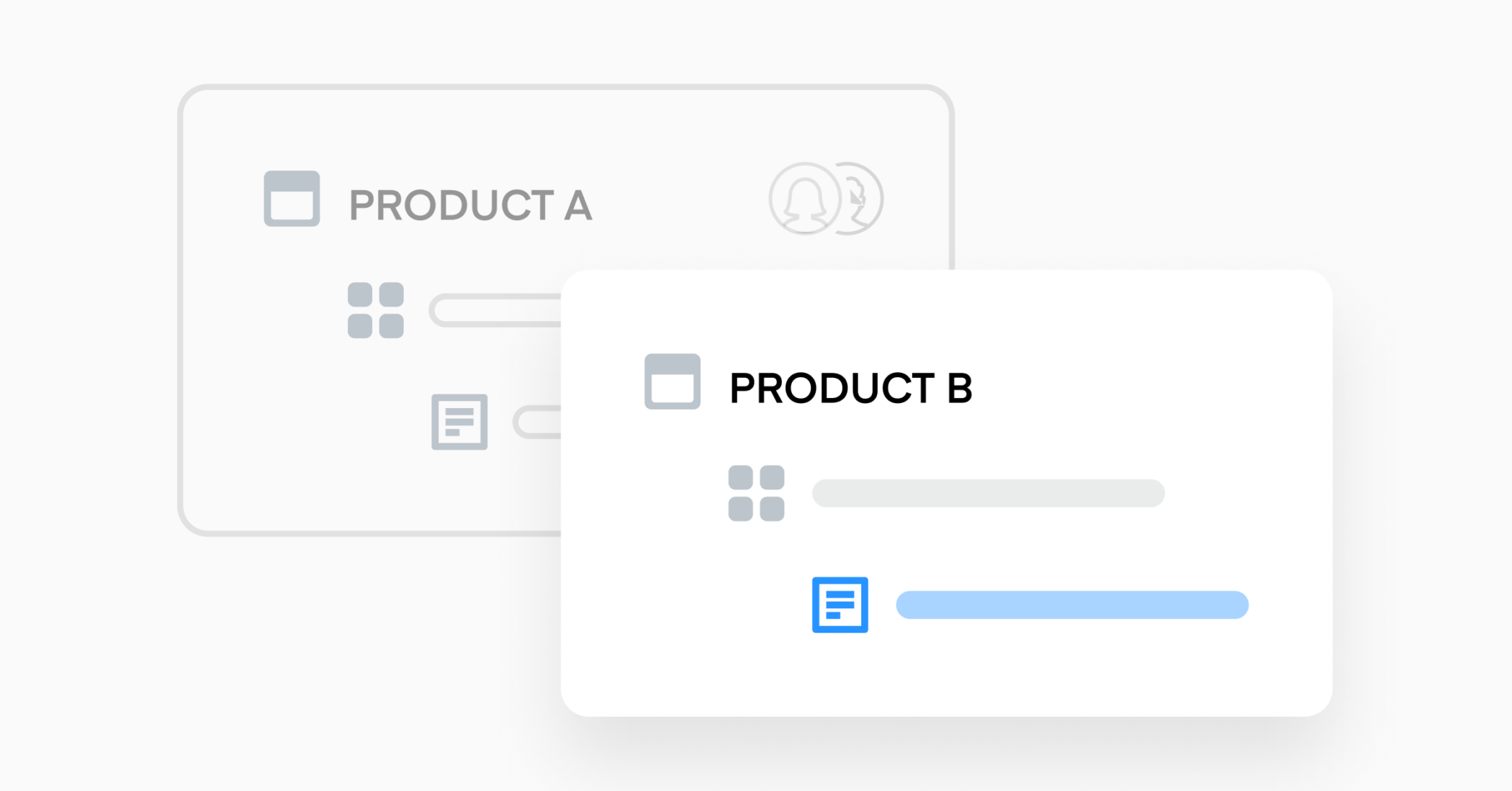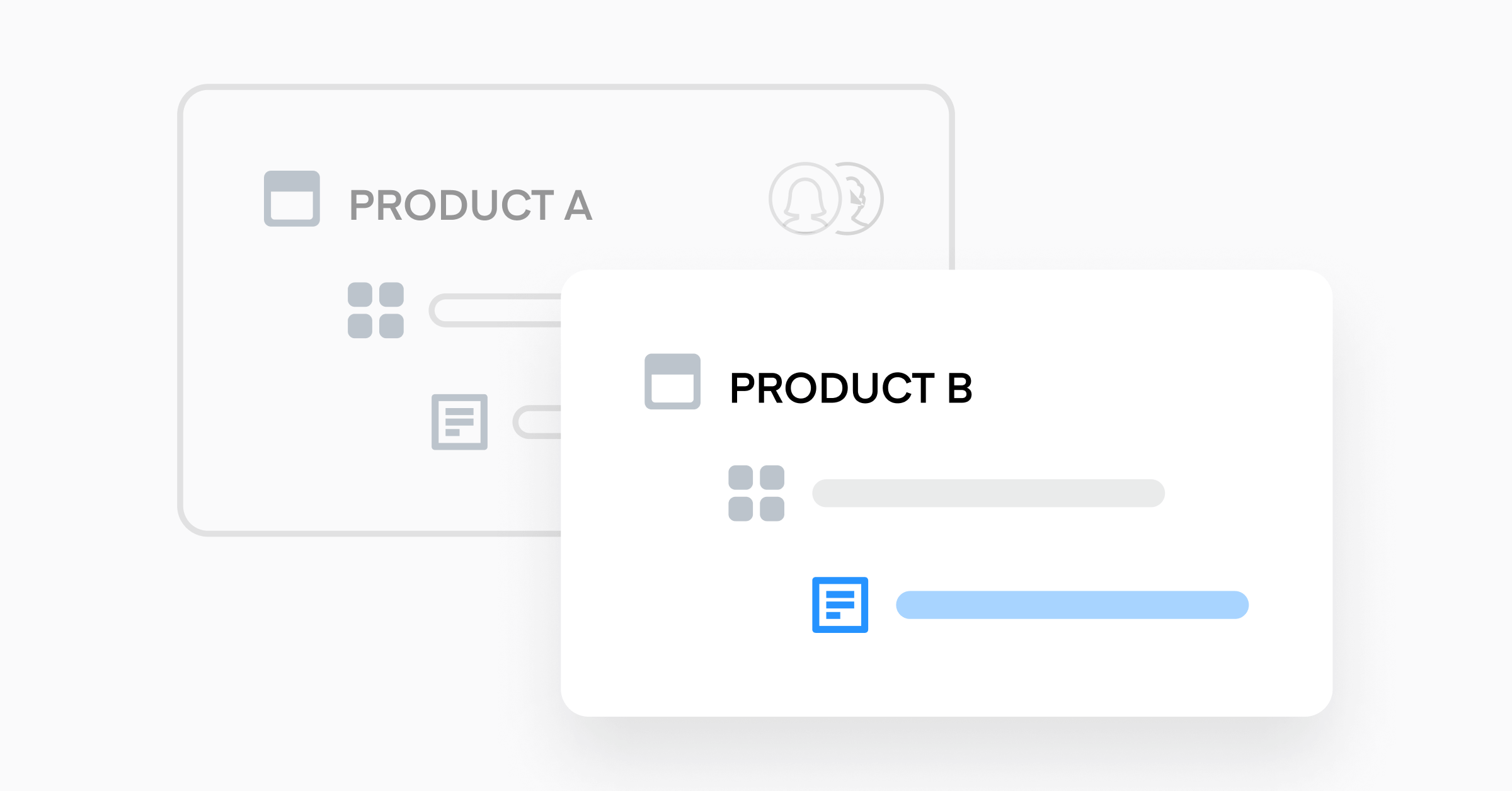What is Product Analysis?

Mastering product analysis isn’t only about understanding the past and present. It’s about shaping the future of a business by delivering products that customers need, and building relevant solutions they don’t even know to ask for.
Product analysis is the backbone of a successful development strategy, providing invaluable insights that guide decision-making and innovation. It’s a multifaceted discipline that encompasses a wide range of methodologies, tools, and approaches, and one that’s become an integral part of the product development process, influencing everything from initial ideation to post-launch optimization.
History and Evolution of Product Analysis
The roots of product analysis sit in industrialization, when manufacturers needed new ways to optimize production and enhance quality. Over time, it evolved to become a response to changing consumer demands, technological advancements, and global market dynamics.
Shifting from purely manufacturing-oriented analysis to consumer-centricity brought about a paradigm shift, completely revolutionizing how product analysis is done. With big data, analytics tools, and AI at the ready, businesses could delve deeper into consumer behavior, market trends, and product performance.
Product Analysis in Different Industries
Technology, healthcare, consumer goods—whatever the industry, product analysis principles are universal.
In digitally-driven markets, product analysis is instrumental in staying ahead of rapidly evolving trends. Constant innovation and technological advancements necessitate a thorough understanding of market dynamics and user preferences. Product analysis helps tech companies identify emerging tech, assess impact, and align products users’ ever-changing needs.
In healthcare, product analysis goes beyond traditional market research. It involves assessing the efficacy of medical devices, pharmaceuticals, and healthcare tech supplies or machines. Product analysis is vital to understanding the complex interplay of regulatory requirements, patient needs, and technological advancements that shape how providers deliver patient-centric products.
In consumer goods, brands rely heavily on product analysis to navigate ever-changing consumer preferences (which can shift even on a day-to-day basis). From food and beverages to fashion and home goods, success looks like continuous analysis of market trends, competitor offerings, and consumer feedback to launch products that resonate with the intended target.
<<Building a product roadmap has never been easier. Get the ebook>>
3 Key Components of Product Analysis
Product analysis serves as a compass, guiding businesses toward informed decision-making and successful product launches. The top three most effective product analysis components require digging even deeper into well-rounded data.
Market Analysis
Market analysis is the comprehensive examination of all external factors that can impact a product’s success. It’s an ongoing process that lasts well beyond the initial product launch. Monitoring market trends, consumer feedback, and competitor moves allows businesses to adapt their strategies and ensure ongoing relevance.
The first step in market analysis is defining the target market. This includes things like studying market size, growth potential, customer segments, and overall industry trends. Who are the potential customers for the product? What are their needs, preferences, and behaviors? Answering these questions allows businesses to tether products directly to market demand.
Conducting a thorough market analysis also involves assessing the competitive landscape. Who are the key players in the market, and what products or services do they offer? Analyzing competitors helps businesses identify gaps in offerings, areas of differentiation, and potential strategies for gaining a competitive edge.
Competitor Analysis
Understanding your competitors is as crucial as understanding your own product. The competitive landscape provides clear clues that businesses can look to for direction, informing decisions about product positioning, pricing, and marketing.
The first step in competitor analysis is identifying who the competitors are. This includes both direct competitors offering similar products or services, and indirect competitors that address the same customer needs in different ways. Once identified, businesses can analyze these competitors based on various factors such as market share, product features, pricing, and customer reviews.
A thorough competitor analysis goes beyond surface-level observations. It involves studying competitor strategies, strengths, and weaknesses to identify opportunities for differentiation. For example, if a competitor is known for affordability, a business may choose to focus on premium features or superior customer service.
Competitor analysis is also not a one-time activity; it’s an ongoing initiative. As the market evolves, new competitors will inevitably emerge, and existing ones may change course. Continuous monitoring lets businesses stay agile and ready to face fluctuations across industries.
Customer Feedback and Insights
The voice of the customer is a powerful force in product development. Leading brands are fiercely focused on customer-centricity, making user feedback paramount to product success. It provides direct insights into how a product is perceived and interacted with, offering a valuable perspective that can’t be found through internal assessments.
Surveys, reviews, social media, and direct interactions are all valuable ways to solicit feedback. Analyzing comments and requests allows businesses to identify patterns, preferences, and pain points, opening the door to solutions and new opportunities. It’s key to remember that the emotions and motivations behind customer feedback can also be imperative in guiding the creation of targeted marketing campaigns.
To gather the most comprehensive insights, businesses should consider both quantitative and qualitative feedback. Quantitative data, such as survey responses and product usage metrics, provides numerical insights, while qualitative data, such as open-ended survey responses and in-depth interviews, offers deeper contextual understanding.
Product Analysis Step-by-Step
Navigating the analysis process requires a structured product strategy framework. From identifying key metrics and data to drawing conclusions and implementing changes, product analysis is about setting yourself up for success at every opportunity.
Step 1 | Identifying Key Metrics and Data
Every product has specific metrics that matter. Identifying key metrics is a crucial first step in the product analysis process. These metrics serve as quantifiable indicators of a product’s performance, helping businesses assess its effectiveness and impact on the target audience. The choice of metrics depends on the nature of the product and the goals of the analysis. They might include:
- User engagement metrics to measure how users interact with the product. Examples include the number of active users, time spent on the platform, and user retention rates.
- Conversion metrics to assess how well the product converts users into customers. This includes conversion rates at different stages of the customer journey, such as sign-ups, purchases, or subscriptions.
- Customer satisfaction metrics are vital for understanding the overall user experience. Metrics like Net Promoter Score (NPS) and customer satisfaction surveys provide insights into customer sentiments.
- Financial metrics are crucial for evaluating the product’s impact on revenue and profitability. This includes metrics like return on investment (ROI), customer lifetime value (CLV), and cost per acquisition (CPA).
With key metrics identified, businesses can leverage analytics tools to gather relevant data. These tools may include web analytics platforms, customer relationship management (CRM) systems, and business intelligence tools. Collecting and analyzing data at regular intervals enables businesses to track changes over time and identify areas for improvement.
Step 2 | Analyzing Product Performance
Beyond numbers lies a story of success (or areas for improvement). Analyzing product performance helps turn raw data into actionable intelligence that informs strategic decisions.
Analyzing product performance involves interpreting the collected data to derive meaningful insights. This step goes beyond surface-level observations and requires a nuanced understanding of how various factors contribute to the overall success or challenges faced by a product. It includes:
- Trend analysis to identify patterns and trends in the data to understand how the product is performing over time. This could involve looking at user engagement trends, conversion rate fluctuations, or seasonality effects.
- Segmentation analysis to break down the data into different segments to identify variations in performance across user demographics, geographic locations, or usage patterns. This allows businesses to tailor strategies for specific audience segments.
- Compare the product’s performance against benchmarks, industry standards, or competitor data. Understanding how the product fares in comparison to others provides valuable context and insights.
- Root cause analysis to uncover the underlying factors contributing to specific outcomes. For instance, if there’s a sudden drop in user engagement, conducting a root cause analysis can help identify the reasons behind this decline.
- Combining quantitative data with qualitative insights for a more comprehensive understanding of the user experience, and to help prioritize areas for improvement.
Step 3 | Drawing Conclusions and Implementing Changes
The final stage of product analysis involves drawing conclusions from the data and implementing changes for continuous improvement. It requires synthesizing insights and translating them into actionable strategies, and acts as the bridge between understanding the current state of the product and charting a course for future improvements. Keep the following in mind:
- Based on the analysis, prioritize areas that require attention. Whether it’s enhancing user experience, optimizing conversion funnels, or addressing technical issues, identifying priorities ensures a focused approach.
- Define clear and measurable objectives for the changes you plan to implement. Whether it’s increasing user engagement, boosting conversion rates, or reducing customer churn, establishing objectives provides a benchmark for success.
- Outline the specific steps and strategies needed to achieve the defined objectives. This may involve collaboration across different teams, development of new features, or adjustments to marketing and communication strategies.
- Put the action plan into motion. This may involve rolling out updates, launching new features, or refining existing processes. Timely and effective implementation is crucial for realizing the desired impact.
- After implementing changes, monitor their impact on key metrics. Continuously iterate based on ongoing analysis and user feedback. The product development cycle is iterative, and each iteration brings opportunities for refinement.
The cyclical nature of product analysis, conclusion drawing, and implementation keeps companies responsive to today’s challenges, as well as proactive about what’s next for the business.
Techniques for Effective Product Analysis
The tools and techniques used in product analysis continually evolve. In this section, we’ll explore the traditional versus modern approaches, helping you understand the pros and cons of each and find the perfect blend for your product analysis needs.
Product Analysis Techniques: Traditional vs. Modern
Balance matters in business, and there are both advantages and disadvantages to leveraging traditional and modern product analysis techniques.
Traditional techniques include:
- Collecting feedback through surveys and questionnaires. While these provide valuable insights, they may be limited by response bias and the challenge of obtaining a representative sample.
- Bringing together a small group of users for discussions and feedback has been a staple of traditional analysis. This method can be resource-intensive, and the insights may not always be representative of the broader user base.
- Leveraging existing market research reports provides insights into industry trends, competitor landscapes, and market forecasts. However, these reports may lack real-time data and may not be tailored to specific product nuances.
On the other hand, modern product analysis focuses more on:
- Platforms like Google Analytics, Mixpanel, and Hotjar, that allow businesses to track user behavior in real-time, providing granular insights into how users interact with a product.
- Machine learning and predictive analytics that enable businesses to predict future trends and user behavior based on historical data. This forward-looking approach enhances decision-making by anticipating market shifts and user preferences.
- A/B testing, where different versions of a product or feature are tested with segments of the user base. This allows businesses to empirically determine which version performs better, minimizing guesswork.
- Sentiment analysis to gauge user sentiments from written feedback, reviews, and social media. This provides a nuanced understanding of how users feel about a product.
Choosing between traditional and modern techniques depends on factors such as the nature of the product, available resources, and the desired depth of analysis. Often, a combination of both traditional and modern approaches offers the most comprehensive understanding of a product’s performance.
Customer Stories: Product Analysis in Practice
Productboard puts product analysis into practice, pulling together comprehensive feedback, streamlining collaboration, and providing data-driven insights into all aspects of the product life cycle.
Transforming Immuta’s Product Analysis Process
Immuta, a leading data security platform provider, faced internal challenges as its foundational product processes strained under the pressure of rapid expansion. Productboard eased the pain with centralized customer feedback, streamlined product planning, and a more customer-centric approach.
The challenge for Immuta was clear: to scale efficiently and avoid pitfalls associated with ad-hoc communication methods and outdated planning tools. Product manager responsibilities at Immuta were siloed, and they needed a centralized and transparent way to gather, prioritize, and integrate feedback into a dynamic product roadmap.
Productboard’s impact was profound, resulting in higher visibility, deeper cross-functional collaboration, and more data-driven planning, roadmaps, and decisions. The results were tangible, with a 40% increase in customer insights linked to released features during a recent fiscal quarter. Immuta’s product leadership gained greater visibility into operations, and the organization witnessed deeper engagement from go-to-market teams.
Productboard not only met Immuta’s need for scalability but also contributed to clearer communication, better customer insights, and faster time-to-market. By harnessing ongoing customer conversations, Immuta aligned cross-functional teams, leading to more customer-centric releases and sustained growth.
Producing Positive Outcomes at Prospecta
Prospecta, a data quality and compliance solution provider, faced the intricate challenge of ensuring data quality, integrity, and compliance for its customers while enhancing efficiency, collaboration, and customer satisfaction. They grappled with visibility and communication challenges between product and engineering, delays in product shipping, and strained efficiency. The absence of a holistic product management framework also hindered customer-facing teams, resulting in missed opportunities, customer churn, and user frustration.
After implementing Productboard, which seamlessly complemented their efforts in Jira, the tool became Prospecta’s one-stop, comprehensive solution for all things product. With clarified roadmaps and structure, featuring components, features, and subfeatures, visibility and collaboration improved significantly across teams, along with several other benefits:
- Efficient Collaboration and Visibility
Productboard facilitated cross-functional teams’ access to a central source of truth, eliminating the need for roadmap walk-through sessions. This streamlined collaboration, reducing delays and enhancing organizational efficiency.
- Customer Feedback Integration
The platform allowed for the centralization of customer feedback, feature prioritization, and roadmaps, enabling Prospecta to efficiently solve customer problems and share results seamlessly.
- Stakeholder Buy-In and Reporting:
Productboard’s user-friendly interface and visibility features secured stakeholder buy-in, allowing cross-functional teams to align around the company’s product vision. Leaders could focus on design and reporting, generating reports based on resourcing needs and realigning teams effectively.
- Cost Savings and Improved Developer Experience
Developers appreciated the contextual information provided by Productboard, allowing them to thrive in their roles. This led to improved collaboration between product and engineering, saving time and ensuring a smoother development process.
- Enhanced Customer Loyalty
Customer-facing teams could now transparently communicate with users about product developments, incorporating their suggestions into the product lifecycle. This improved responsiveness and transparency boosted customer loyalty, showcasing Prospecta’s commitment to user opinions.
Finally, Productboard’s integration with Jira proved instrumental in addressing Prospecta’s challenges, offering a unified platform for efficient collaboration, improved customer satisfaction, and streamlined product management processes that continue to drive positive outcomes across the organization.
Common Product Analysis Challenges and Pitfalls
Understanding common stumbling blocks in product analysis is crucial for navigating the complex landscape of development and delivery. Here’s what to watch out for.
- Data overload is one of the primary challenges in product analysis. Businesses may struggle to sift through the noise and extract actionable insights from the vast datasets available. Establishing clear objectives and focusing on relevant metrics can help streamline the analysis process.
- Biased data interpretation can lead to misguided conclusions. Confirmation bias, for example, might cause analysts to interpret data in a way that aligns with their existing beliefs. Implementing diverse perspectives and conducting thorough peer reviews can help mitigate the impact of biases.
- Failing to prioritize user-centricity can result in products that don’t resonate with the target audience. Regular testing, surveys, and feedback sessions make it much easier to align successful outcomes with diverse input.
- Inadequate cross-functional collaboration can hinder the holistic understanding of product performance. Encouraging open communication and collaboration fosters a more comprehensive analysis process.
- Failure to iterate based on insights can impede progress. Businesses that do not actively apply lessons learned from previous analyses may find themselves stuck in a cycle of repeating mistakes. Embracing a culture of continuous improvement is key to overcoming this challenge.
Product Analysis Best Practices
Product development is an ongoing journey of improvement. Analysis allows teams to actively and continuously iterate based on insights gained from analysis. Whether it’s refining features, adjusting marketing strategies, or addressing new user concerns, commitment to iteration is crucial for staying competitive.
Establish clear objectives
Define clear and measurable objectives for your product analysis. Whether it’s improving user engagement, increasing conversion rates, or launching new features, having well-defined goals provides direction for the analysis process.
Embrace User-Centered Design
Prioritize user feedback and preferences throughout the product development lifecycle. Conduct user testing, gather feedback, and integrate user insights into decision-making, ensuring alignment with the actual needs and expectations of the target audience.
Utilize a Mix of Quantitative and Qualitative Data
Combine quantitative data with qualitative insights for a more holistic understanding. While quantitative data provides numerical metrics, qualitative data, such as user feedback and sentiment analysis, adds depth and context to the analysis.
Foster Cross-Functional Collaboration
Encourage collaboration and open communication across different departments. Product analysis is not solely the responsibility of one team; it requires input from marketing, development, customer support, and other key stakeholders. A collaborative approach ensures a comprehensive analysis.
Iterate Based on Insights
Product development is an ongoing journey of improvement. Actively iterate based on insights gained from analysis. Whether it’s refining features, adjusting marketing strategies, or addressing user concerns, continuous iteration is crucial for staying competitive and meeting user expectations.
Shaping the Future of Product Analysis with Productboard
Productboard is every product manager’s strategic ally, offering a centralized hub for data, insights, and cross-org collaboration. It makes product analysis more effective, leading to informed decisions and the delivery of successful, user-centric products.
By centralizing disparate data sources, Productboard seamlessly integrates customer feedback, feature requests, and user analytics, providing a holistic perspective for product teams. Robust analytics and reporting facilitate data-driven decision-making at every stage of the product life cycle, and customizable dashboards deliver insights into key metrics, user behaviors, and market trends.
Marketing, development, and customer support are all able to work cohesively within the platform, synchronizing insights and strategies. Placing the user’s voice at the helm, the platform integrates customer feedback as a cornerstone, allowing for the capture, analysis, and actionable response to consumer opinions, and cultivating a distinctly customer-centric approach.
Supporting agile product development, Productboard also incorporates features like A/B testing, user segmentation, and iterative planning, enabling businesses to stay agile, respond to real-time insights, and adapt to evolving user expectations. Elevating strategic planning and roadmapping, the platform assists teams in prioritizing features based on data-driven insights, ensuring a focus on initiatives that deliver maximum value to both users and the business.
With seamless integration with existing tools like Jira and Trello, Productboard ensures a cohesive workflow for teams, allowing them to continue using their preferred tools while leveraging the centralized features of the platform. Empowering user research and insights through dedicated tools for surveys and qualitative data collection, Productboard enriches the product analysis process by providing nuanced understanding of user needs, preferences, and pain points.
Innovation remains a constant with Productboard as it evolves with features like advanced analytics, machine learning capabilities, and predictive modeling. This commitment enables businesses to stay at the forefront of product analysis techniques, ensuring they are well-equipped for continuous improvement and innovation.
Global industry leaders turn to Productboard to create product analysis playbooks and strategies that place the customer at the core of every initiative, accelerate time-to-market, and drive sustainable, repeatable success. Discover how to get to better product outcomes with every launch, deliver products that are always relevant and competitive, and streamline product operations with a free trial.




